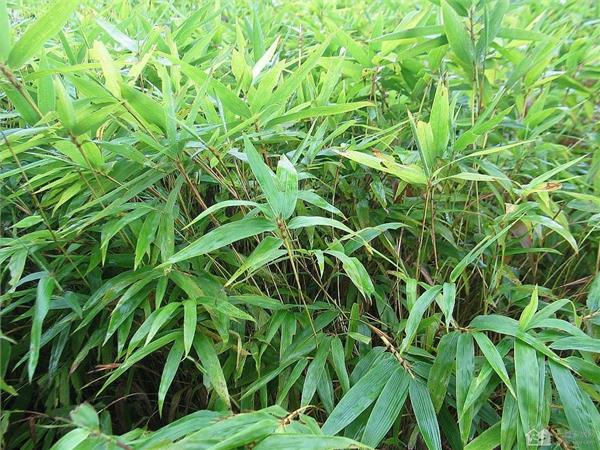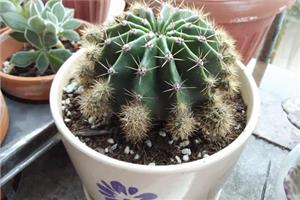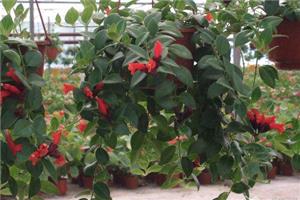Don't you have the beautiful bamboo that is easy to feed?
What distinguishes Mao bamboo from other bamboos is that its bamboo pole is covered with a thin layer of fine brown hair, but its planting technique is almost the same as that of other bamboos.

1. Morphological characteristics of Phyllostachys pubescens.
The culms are scattered, up to 20 meters high, more than 16 meters in diameter, 40 meters long in the middle internodes and shorter in the basal internodes. New culm densely pilose, powdery; old culm glabrous, with white powder ring under node, then gradually black, culm ring inconspicuous below branch, mang ring raised, first covered with a ring of hairs, then glabrescent. The shooting period is from late March to April. Culms thick leathery, brownish purple, densely covered with brown hairs and dark brown spots, often distributed in blocks; ears small, ear margin hairy; tongue width short, arcuate, both sides decurrent; holding leaves short, long triangular to lanceolate, green, initially erect, later reflexed. Branches and leaves arranged in two rows, 2-3 leaves per branchlet, smaller, lanceolate, 4-11 cm long and 0.5-1.2 m wide; ligule raised, auricles inconspicuous, shoulder hairs, and then gradually deciduous. It usually doesn't blossom.
2. Detailed explanation of planting techniques of Phyllostachys pubescens.
Land selection: it is appropriate to choose acid, slightly acidic or neutral sandy loam or sandy soil with loose, moist, fertile soil depth of more than 50 cm and good drainage and permeability.
Land preparation: land preparation should be carried out in autumn and winter before afforestation, including three processes: clearing forest land, reclamation and digging planting holes. The afforestation land with small slope adopts full reclamation land preparation, the afforestation land with large slope adopts horizontal zone, and the forest land with steep slope above 25 degrees adopts block soil preparation.
Afforestation: afforestation methods include bamboo transfer afforestation, whip afforestation, truncation afforestation, seedling afforestation and whip seedling afforestation. Among them, the bamboo transplanting method is the most widely used in production. The mother bamboo should be selected for afforestation. The mother bamboo is suitable in the forest where the bamboo age is 2-3 years old, the DBH is 3-6 cm, the growth is robust, the branches are low, the branches and leaves are luxuriant, the bamboo nodes are normal and free from diseases and insect pests.
Fertilization: Phyllostachys pubescens grows fast, has high yield and absorbs a lot of soil nutrients, so it is necessary to supplement soil nutrients through fertilization. The application of chemical fertilizer should be mainly nitrogen and phosphate fertilizer, and should be mixed application of nitrogen and phosphate fertilizer. 10-15 kg urea and 3-5 kg superphosphate can be applied per mu. If felling pile fertilization is carried out, the bamboo knots in the bamboo pocket should be opened first, and 0.25-0.5 kg of urea or ammonium bicarbonate should be applied in each pile pocket, and then sealed with soil.
Watering: immediately after sowing, sprinkle water to keep the soil moist. When the soil is short of water, the soil moisture should be sprinkled in time, which is an important link to ensure the emergence of seeds.
Build a shade shed: when more than 50% of the bamboo seedlings are unearthed, the shade shed should be set up in time to remove the cover grass. The initial transmittance of the shade shed is 40%, and with the increase of the number of tillers of bamboo seedlings, the transmittance can be expanded to 60%. Demolish the shade shed after autumn.
Weeding: after the bamboo seedlings are unearthed, the weeds in the seedling bed should be cleared in time, the seeds washed by sprinkling water to wash bare ☆ and forbidden ☆ should be cultivated in time, and water should be sprinkled in time after weeding, so as to facilitate the close connection between bamboo seedlings and soil.
Thinning: Hsinchu sprouts fast, the quantity is large, but the size is uneven, so it should be thinned in time. When thinning, we should go to the small to stay big, to the weak to stay strong, to the old to stay young, to dense and sparse.
Diseases and insect pests: the main diseases are bamboo arbuscular disease, shoot blight, stem rot, bamboo black nevus and so on. The main pests are bamboo leaf borer, bamboo shoot night moth, bamboo spot moth, bamboo nest pink mosquito, yellow ridge bamboo locust and so on. It is mainly controlled by spraying carbendazim and other agents.
This is the end of the introduction on how to grow Phyllostachys pubescens. If you have a courtyard and other suitable places in your home, you can try to plant this kind of plant, which is both easy to feed and beautiful.
- Prev

It is very simple to cultivate cactus. What are the three kinds of flower words in cactus?
It is very simple to cultivate cactus. What are the three kinds of flower words in cactus?
- Next

You don't have to buy lipstick anymore when you grow lipstick.
You don't have to buy lipstick anymore when you grow lipstick.
Related
- Wuhan Hospital Iron Tree Blooming Result Was Instantly Frightened by the Gardener Master
- Which variety of camellia is the most fragrant and best? Which one do you like best?
- What is the small blue coat, the breeding methods and matters needing attention of the succulent plant
- Dormancy time and maintenance management of succulent plants during dormancy
- Minas succulent how to raise, Minas succulent plant pictures
- What are the varieties of winter succulent plants
- How to raise succulent plants in twelve rolls? let's take a look at some experience of breeding twelve rolls.
- Attention should be paid to water control for succulent plants during dormant period (winter and summer)
- Watering experience of twelve rolls of succulent plants
- Techniques for fertilizing succulent plants. An article will let you know how to fertilize succulent plants.

